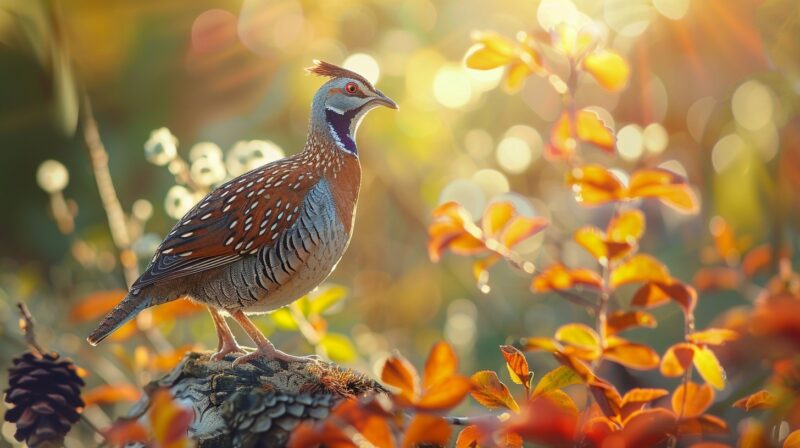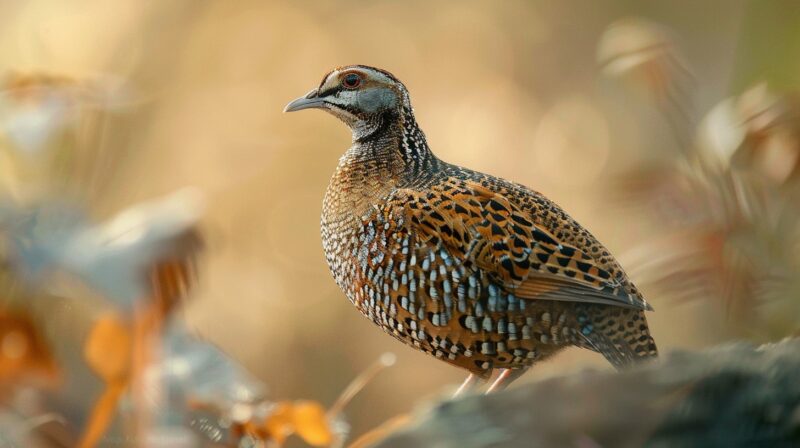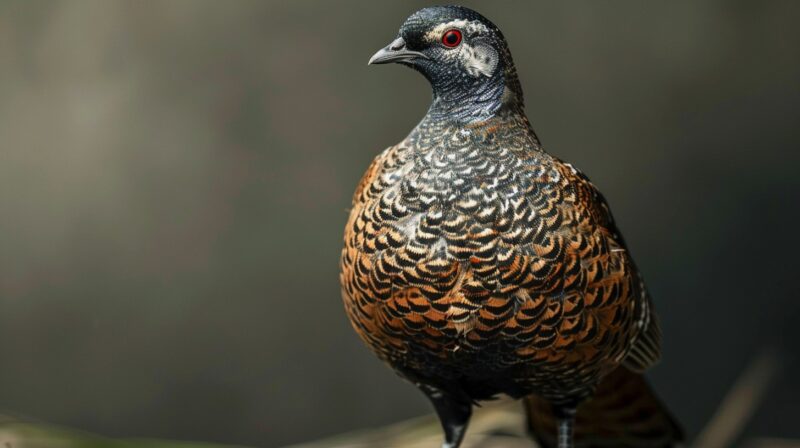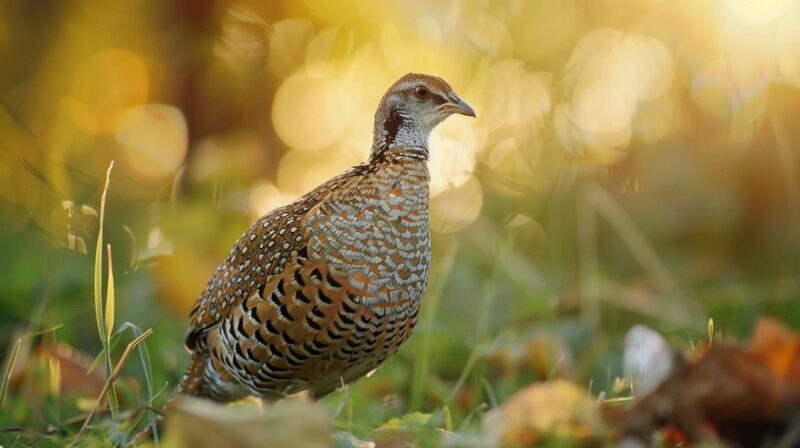Quails are small, plump terrestrial birds, often adorned with distinctive plumage that makes them a delight to observe.
North America is home to several quail species, each with its unique characteristics and habitat preferences.
In this post, I will talk about these fascinating birds, from the familiar Bobwhite Quail to the elusive Mearns’ Quail.
Although they are not among the largest birds in North America, there are plenty of fascinating facts about their role in the ecosystem. So, without further ado, let’s begin.
Key Takeaways
- Quail species in North America are diverse, each with unique habitats and behaviors, highlighting the importance of tailored conservation strategies.
- Habitat loss and environmental changes pose significant threats to quail populations, necessitating concerted conservation efforts and habitat restoration.
- Technology, community involvement, and supportive legislation are crucial tools in monitoring, protecting, and enhancing quail populations and their natural habitats.
- Individual actions, such as participating in conservation projects, supporting sustainable practices, and advocating for wildlife-friendly policies, collectively contribute to the preservation of quail species.
What Are Quail and Where Can You Find Them?

Bobwhite Quail
The Bobwhite Quail, a symbol of the American countryside, weighs around six ounces and is cherished by hunters for the sense of nostalgia it evokes.
Found across the eastern and central United States, these birds are most populous in states like Nebraska, Kansas, and Oklahoma.
Their survival hinges on a diverse habitat offering everything from nesting to brood-rearing sites, complete with an abundance of insects.
Gambel’s Quail
Sporting distinctive top knots, Gambel’s Quail embody the essence of the Southwest’s deserts.
These birds are adept runners, challenging hunters with their speed and the rugged terrain of their habitats.
They reside across a swath of the West, including New Mexico, California, and Arizona.
Scaled Quail
Scaled Quail, known for their unique blue streak and preference for desert grasslands, are remarkable runners.
Their range stretches from western Oklahoma to eastern Arizona, showcasing their adaptability to arid landscapes.
Valley Quail
In California’s river valleys and canyons, the Valley Quail thrives, known for its explosive flights and ability to evade predators.
Hunters with light guns and pointing dogs particularly favor these birds for their challenging yet rewarding hunt.
Mountain Quail
As the largest North American quail, Mountain Quail are a sight to behold. They prefer steep, brushy terrains in western mountain ranges, making them elusive targets for birdwatchers and hunters alike.
Mearns’ Quail
Found in the oak savannas of southern Arizona and New Mexico, Mearns’ Quail are coveted by hunters for their challenging pursuit.
These birds, also known as Montezuma Quail, prefer higher elevations and offer a physically demanding hunt.
Quail Species Across North America

- California Quail: With their distinctive plume and soft plumage, these birds are native to the western U.S., particularly California. They mainly feed on seeds but also enjoy a diet of leaves, flowers, and invertebrates.
- Mountain Quail: The largest of North American quails, these elusive birds feed on a varied diet, including plants, insects, and small invertebrates.
- Gambel’s Quail: Adapted to arid environments, they thrive in the southwestern U.S., living mainly on plants and seeds.
- Montezuma Quail: Known for their small size and elusive nature, they inhabit Mesoamerica’s mountainous regions and feed on tubers and insects.
- Scaled Quail: These birds form small family groups and are recognized by their scalloped plumage, inhabiting desert grasslands and scrublands.
- Northern Bobwhite: A common sight in the Eastern U.S., their diet helps shape the ecosystem by controlling seeds and insect populations.
Why Are These Birds Important?
Quails play a crucial role in their ecosystems, acting as both predator and prey. They help control insect populations and disperse seeds, contributing to the health of their habitats.
For many people, quails also hold cultural and recreational significance, being popular among birdwatchers and hunters for their beauty and the challenge they present.
How Can We Help Preserve Quail Populations?
With quail habitats facing threats from urban expansion, agriculture, and climate change, it’s crucial for us to take steps to protect these birds and their environments. Here are a few ways we can contribute:
- Support Conservation Efforts: Engaging with and supporting organizations dedicated to wildlife conservation can make a significant impact. These groups work on habitat restoration projects and advocate for policies that benefit quail and other wildlife.
- Practice Responsible Hunting: Hunters play a vital role in conservation. Adhering to sustainable hunting practices and regulations helps ensure quail populations remain robust for future generations.
- Create Quail-Friendly Spaces: Landowners can contribute by managing their land in ways that support quail habitats. Planting native vegetation, preserving brushy areas, and creating buffer zones around agricultural fields are effective strategies.
- Educate Others: Spreading awareness about the importance of quail and their habitats encourages more people to participate in conservation efforts. Education can inspire community involvement in habitat restoration and protection initiatives.
Supporting Quail-Friendly Legislation

Policy and legislation play a pivotal role in wildlife conservation. Advocating for and supporting laws that protect natural habitats, regulate hunting, and address environmental issues such as pollution and climate change can have a profound impact on the survival of quail species.
Engaging with local and national lawmakers, participating in public hearings, and voicing support for conservation initiatives are effective ways to influence policy decisions that benefit quail and other wildlife.
FAQs
What Do Quail Eat?
Quail diets vary by species but generally include seeds, grains, insects, and various plant materials.
Their foraging behavior helps control insect populations and seed dispersal, contributing to the health of their ecosystems.
How Long Do Quail Live?
The lifespan of quail can vary depending on the species and environmental factors, but most wild quail live 1 to 2 years.
However, in protected environments without predators, quail can live longer.
Can Quail Fly?
Yes, quail can fly, though they are primarily ground-dwelling birds. They use flight mainly as a means to escape predators, flying short distances to cover.
Their flights are fast and usually close to the ground.
Are Quail Endangered?
While some quail populations are stable, others face threats from habitat loss, predation, and environmental changes.
Conservation efforts are essential to prevent declines and ensure the survival of all quail species.
Final Words
The preservation of quail populations hinges on protecting their habitats. Efforts to conserve grasslands, woodlands, and desert areas are essential for maintaining healthy quail populations.
Through responsible hunting practices and habitat management, we can ensure that future generations will continue to enjoy the presence of these remarkable birds in North America’s landscapes.
North America’s quails are a diverse and fascinating group of birds, each adapted to thrive in specific environments.
From the arid deserts of the Southwest to the lush river valleys of California, quails enrich our ecosystems and our experiences in nature.
Related Posts:
- Characteristics Of North American Bears - A…
- 11 Largest Whales of North America: Unveiling the…
- Wings of Miniature Majesty: Appreciating 15 North…
- 10 Slowest Animals in North America - Slow and Steady
- 18 Largest Birds Of North America - How They Survive…
- 10 of the Largest Animals In North America - Nature's Giants








